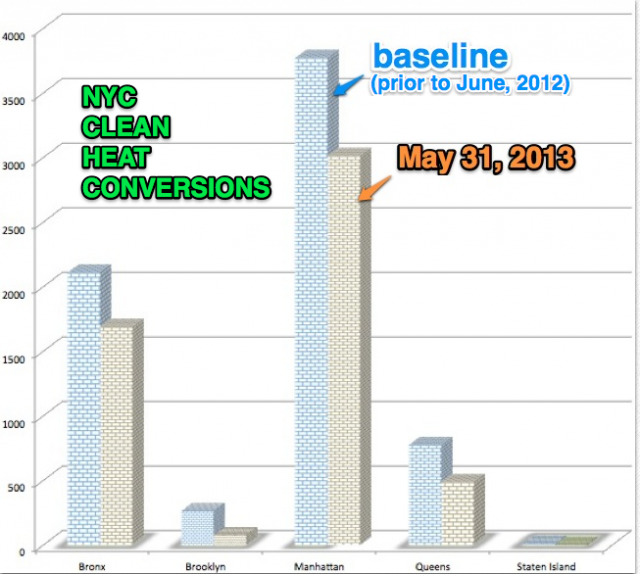One of the lesser recognized environmental feats of the Bloomberg administration will be the phase-out of heavily polluting heating oils.
The black smoke seen pouring off buildings is an old-fashioned sight. Only New York City requires a certain sludgy, or unrefined heating oil. Nine thousand buildings–just one percent of stock–emit more soot or particulate matter than all the exhaust from cars or trucks on the city streets.
So those really dark soot clouds you see pouring off buildings sometimes, contribute to the overall particulate matter that the city attributes to more than 3,000 deaths annually. The Mayor’s PlaNYC 2030 air quality chapter puts the impact at 2,000 hospital admissions and 6,000 emergency department visits for asthma.
One year ago this month the NYC Clean Heat program, an effort with the Environmental Defense Fund, went into full swing as a new law required buildings to switch to cleaner burning boilers if not to steam or gas. In April, the team announced it reached its goal of reducing half the pollution from heating oil by the end of this year.

Manhattan saw 759 conversions, the most of all boroughs, but continues to house 3,011 buildings with toxic unrefined heating oil. The Bronx had the second most buildings to convert, but switched 421 and still has 1,689 to go. Staten Island only had ten buildings to convert and has one left.
The program triggered protest from anti-fracking activists who see the program as too natural-gas friendly.
As of February, most heat conversions involved hooking up to Con Ed gas lines instead of refined oil. In February, 353 converted to low sulfur No. 2 oil; 921 switched to gas; five switched to steam and the remaining (at least 350 but could be more) converted to a No. 4 (a mix of 2 and 6) according to EDF.